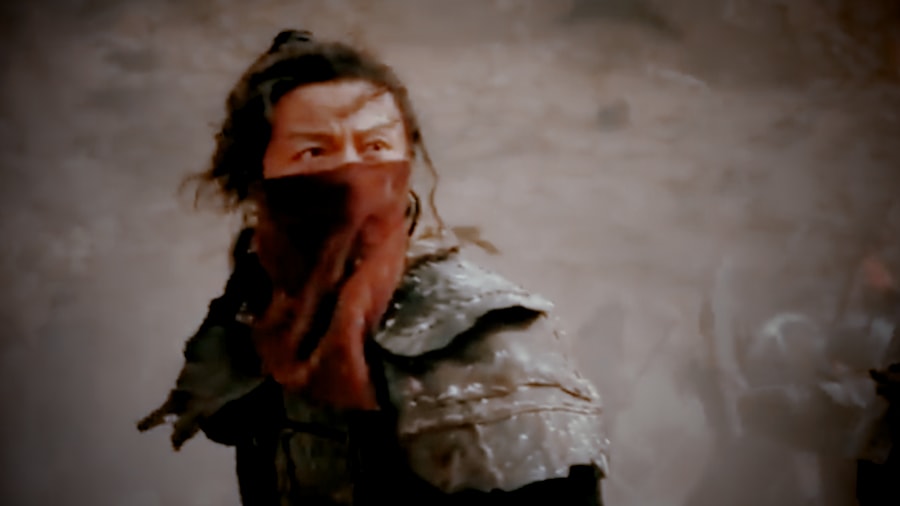
The Warrior Heart 戰士心 tradition traces its roots back to approximately 2500 BC, when it operated as a working art for assassins. Known for its lethal techniques and covert strategies, it played an integral role in political and military manoeuvres throughout ancient history. In these early times, the martial art, then referred to as Maan Mut Ji Do 萬物之道 or ‘Way of Ten Thousand Things,’ embodied a ruthless precision that made it invaluable to those who sought to resolve conflicts through the targeted elimination of adversaries. From the shadows, assassins wielded this tradition as an art form, one that was honed through secrecy, discipline, and intense training.
However, the role of Maan Mut Ji Do 萬物之道 was not limited to assassins alone. Throughout most of its history, especially up until the early 19th century, practitioners of the art were employed in various capacities. The training encompassed skills essential for spies, thieves, and intelligence agents. Their activities were not just confined to killing; they gathered information, penetrated enemy lines, and executed missions that required an intricate knowledge of stealth, deception, and martial prowess. This adaptability made the art invaluable in numerous domains, where secrecy was the currency of survival.
By the Qing dynasty 清朝 (1644-1912), a dramatic shift occurred within the tradition. The art, which had long thrived in the shadows, began its transformation into a force for protecting life and property. This change, coming to full prominence around the 1820s, saw the emergence of Bo Biao 保鏢, where practitioners became the protectors rather than the aggressors. With the increased demand for security during the chaotic periods of the Qing dynasty 清朝, the Warrior Heart 戰士心 tradition repositioned itself, offering its talents to safeguard merchants, travellers, and property, as opposed to being the tools of political assassination or theft. This shift symbolized not only a practical response to changing societal needs but also a reimagining of the art’s moral foundation.
During this period, the lineage made effective use of its stealth techniques in critical roles. For instance, they operated as a private spy force, gathering intelligence on bandits and other dangers threatening the Bo Biao 保鏢 community. Their night-time scouting capabilities were indispensable for protecting valuable cargo, both on the Grand Canal 大運河 and overland. These skills, honed over centuries, allowed them to monitor potential threats long before any harm could reach those they were entrusted to protect. In this new role, stealth became a tool of foresight and prevention.
However, by the mid-20th century, the Warrior Heart 戰士心 tradition encountered stagnation. By the 1980s, the art had experienced a notable decline, as modernisation and new socio-political environments rendered many of its traditional practices obsolete. The high demands of an industrialised society, compounded with a diminishing interest in ancient martial arts, left the Warrior Heart School 戰士心門 at a crossroads. By 1985, the once-flourishing tradition was in danger of being forgotten altogether.
It was during this critical period that Les Conn and Noelle Conn, ‘closed-door’ apprentices to Master Kwan Yuen Cheong 關潤昌, proposed an innovative solution. In 1987, they suggested that the martial art should not merely survive but be preserved as an intangible cultural asset. Their proposal was inspired by the preservation efforts in other martial traditions, most notably Master Otake’s 大竹利典 work with the Katori Shinto-ryu 天真正伝香取神道流 school, a Japanese martial art that has managed to maintain its cultural and martial significance despite changing times. The Katori Shinto-ryu 天真正伝香取神道流, famous for preserving its samurai heritage, became a model for how a once-deadly art could be sustained in times of peace for educational, cultural, and philosophical purposes.
Master Kwan Kwan Yuen Cheong 關潤昌 agreed, and thus began the process of restoring and perpetuating the Warrior Heart 戰士心 tradition as a cultural heritage, focusing on the intrinsic values of the martial art beyond its destructive capacities. Since then, the art has evolved into a symbol of ancient wisdom and discipline, offering practitioners not just martial skills but a connection to their historical and philosophical roots. By shifting the focus from pure martial prowess to the preservation of a cultural legacy, the Warrior Heart 戰士心 tradition has found new relevance, showing how an art born in times of violence can still offer profound value in peaceful times.
Through this revitalisation effort, the tradition has come to embody the balance between past and present, war and peace, destruction and protection. The transition from a deadly assassin’s art to a means of cultural preservation is a testament to the versatility and endurance of the Warrior Heart 戰士心 lineage. As it stands today, this ancient practice continues to evolve, ensuring its survival for future generations while maintaining its core values of secrecy, discipline, and respect for the art itself.
